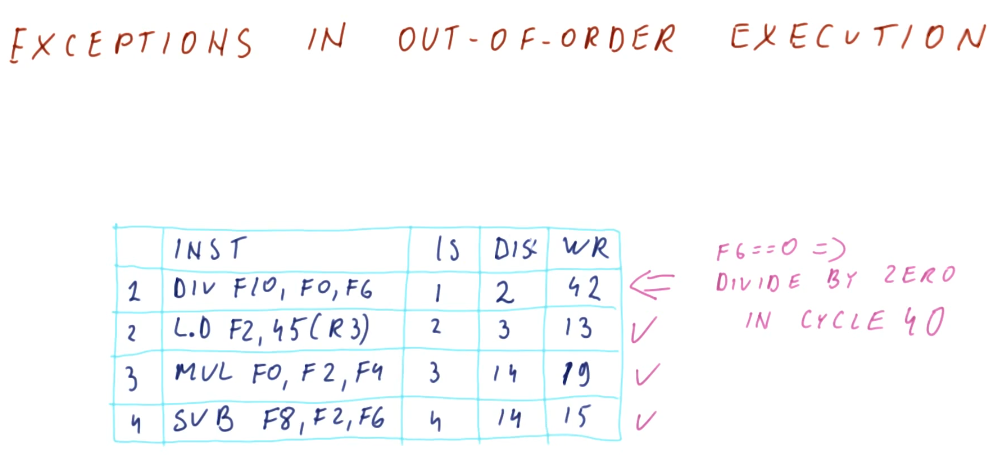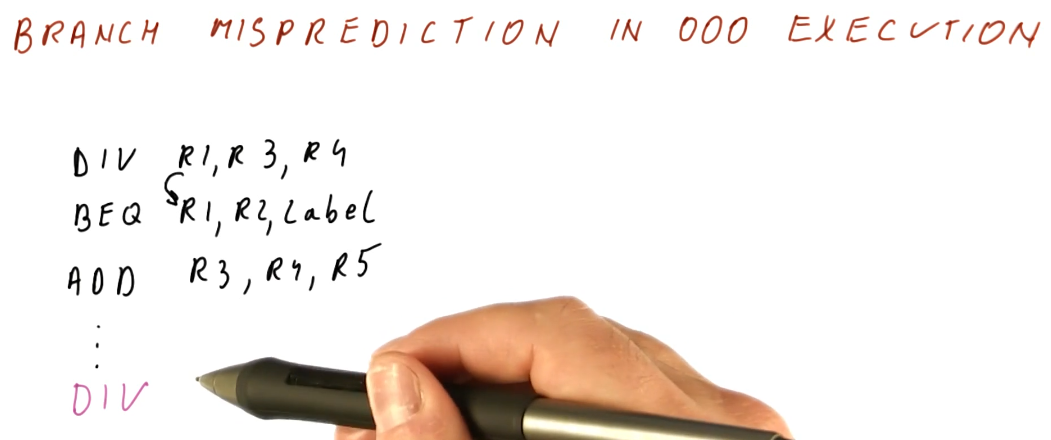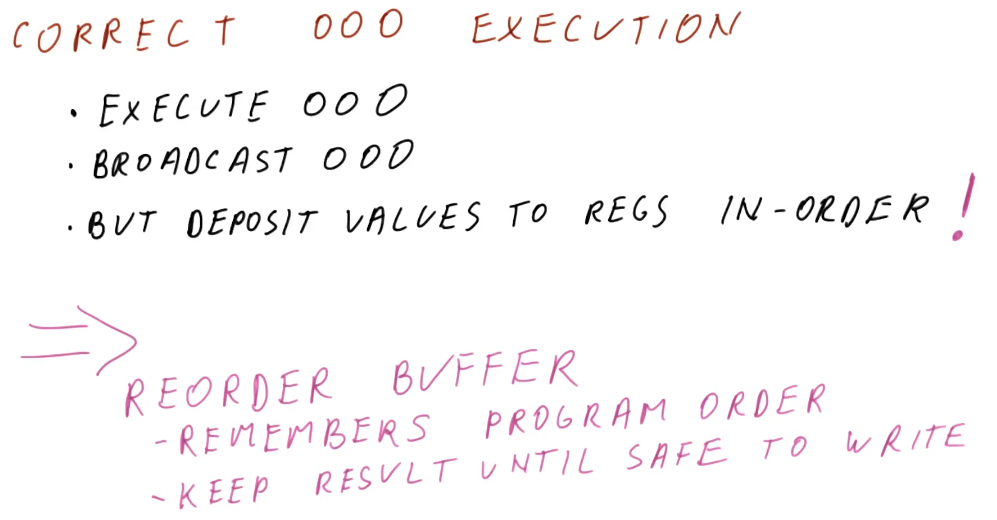Reorder Buffer (ROB)
Processors can improve performance a lot by reordering instructions. But what happens when the reordering of instructions causes exceptions to happen, like division by zero? This lesson explains how processors cleanup reordered instructions when exceptions happen.
Exceptions in out-of-order execution
Below is an excerpt from the lecture showcasing how exceptions can negatively affect processors that support out-of-order execution. As we can see in this example, instruction 1 takes 40 cycles to complete, however, it encounters an exception where a divide by zero was attempted.
The program counter is saved and an exception handler takes over. After the
exception handler executes, the program is restarted from the DIV instruction.
Unfortunately, the other three instructions have already executed and have
written their results to the registers - thus the DIV instruction will be
using the incorrect value for F0 and it will not execute as intended.

Branch mis-prediction in ooo execution
Below is an excerpt for the lecture covering how branch mis-prediction can also
negatively affect our ability to execute instructions out-of-order. In the
provided example, the outcome of a DIV instruction determines the jump
location for the succeeding BEQ instruction.
In this example, mis-predicting the branch causes us to fetch and execute the
succeeding ADD instruction, writing values to R3. Now, when the branch is
actually evaluated and executed, we jump to the real landing location of the
branch, however, because of ooo execution our value for R3 has been modified
incorrectly - succeeding instructions will not execute as intended.
Another example is provided in which we mis-predict the branch and fetch a DIV
instruction. This DIV instruction causes a divide by zero exception, but the
DIV instruction was never meant to be executed - a phantom exception. The
processor goes through all of the steps to handle the exception when, in
reality, we were never supposed to execute the DIV anyways.

Correct ooo execution
Below is an excerpt from the lectures explain what needs to be done in order to achieve correct ooo execution. We can still execute instructions and broadcast their results ooo, however, we must deposit the resulting values of instructions to registers in order - this is not done by Tomasulo's algorithm which is why we are having problems handling exceptions.
We utilize a mechanism called the reorder buffer that remembers program order, even after the issue stage, and keeps results of instructions until it is deemed safe to write these results to registers.
